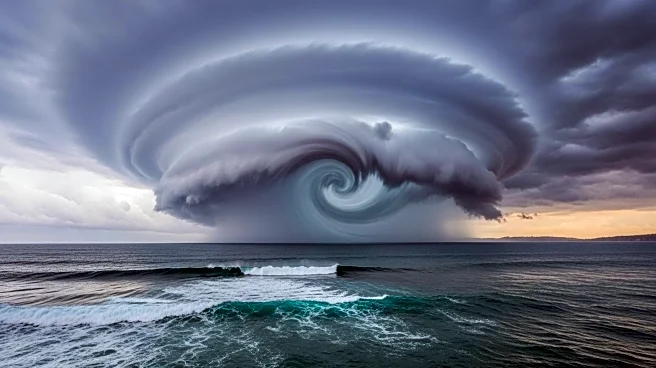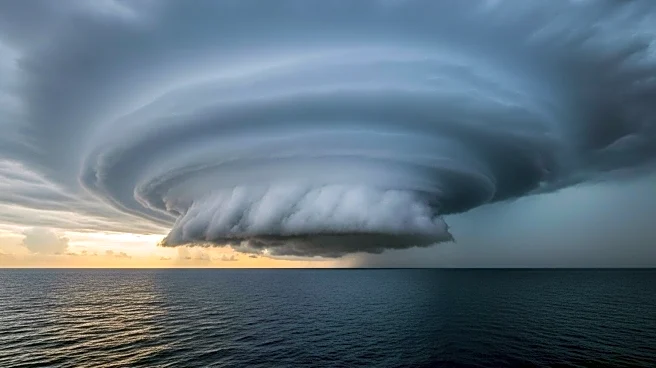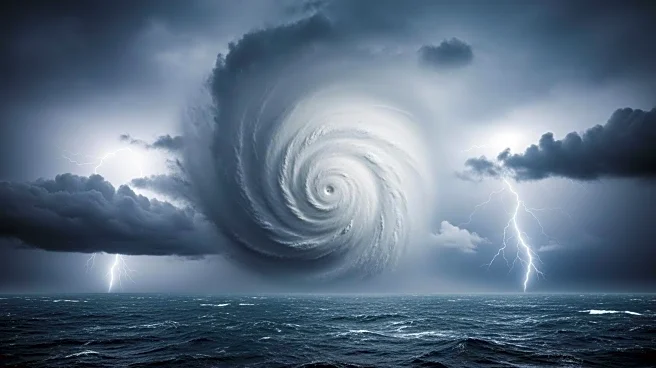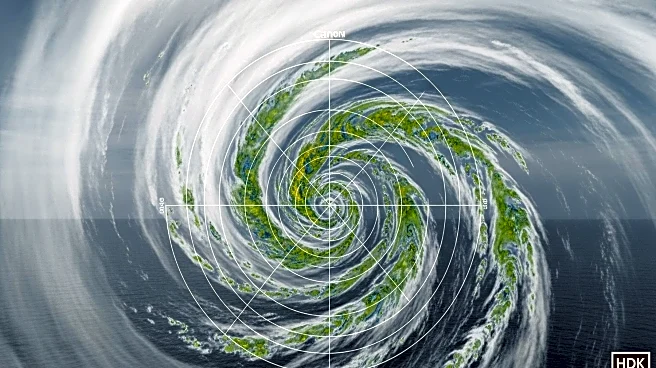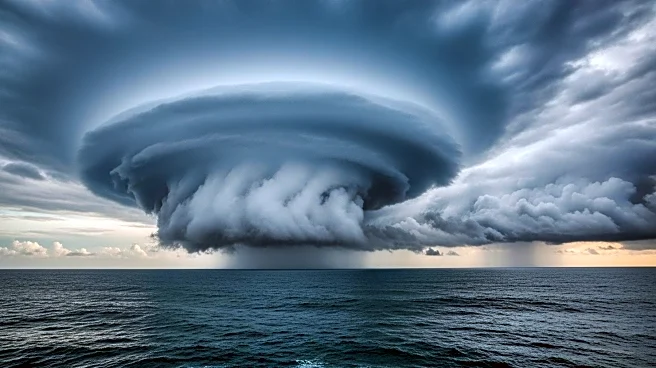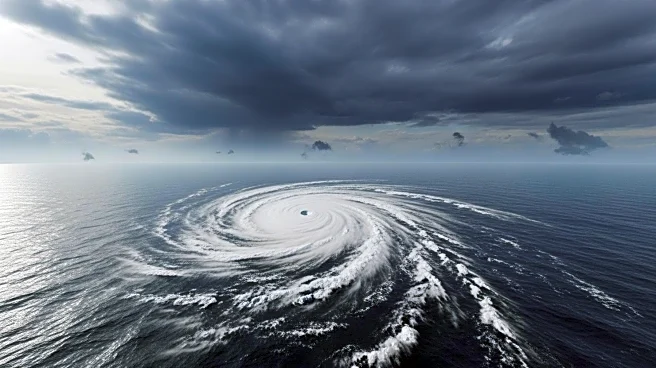What's Happening?
The National Hurricane Center has indicated that a tropical depression may form from a system in the Atlantic, potentially becoming the seventh tropical cyclone of the season and possibly Tropical Storm Gabrielle. The system, currently associated with disorganized showers and thunderstorms, is moving slowly westward across the central tropical Atlantic. Forecasters have given it a 60% chance of development in the next two days and a 90% chance in the next seven days. The system is expected to approach the Lesser Antilles by the middle of next week. The National Oceanic and Atmospheric Administration has updated its forecast for the hurricane season, predicting 13 to 18 named storms, with 5 to 9 potentially strengthening into hurricanes, and 2 to 5 escalating to major hurricanes.
Why It's Important?
The potential development of Tropical Storm Gabrielle highlights the ongoing risks associated with the Atlantic hurricane season, which peaks from mid-August to October. The formation of new tropical systems can have significant impacts on regions such as the Caribbean and the U.S. Atlantic coast, potentially leading to disruptions in travel, damage to infrastructure, and economic losses. The updated forecast by NOAA underscores the need for preparedness and monitoring, as the season is expected to be active with several storms potentially reaching hurricane status. Stakeholders, including local governments and emergency services, must remain vigilant and ready to respond to any threats posed by these weather events.
What's Next?
If the system develops into Tropical Storm Gabrielle, it could pose a threat to areas in the Caribbean and possibly the U.S. Atlantic coast. The National Hurricane Center will continue to monitor the system's progress and provide updates on its development and potential impact. Residents in the affected regions are advised to stay informed and prepare for possible storm conditions. The system's trajectory and intensity will be closely watched, as changes in environmental conditions could alter its path and strength.
